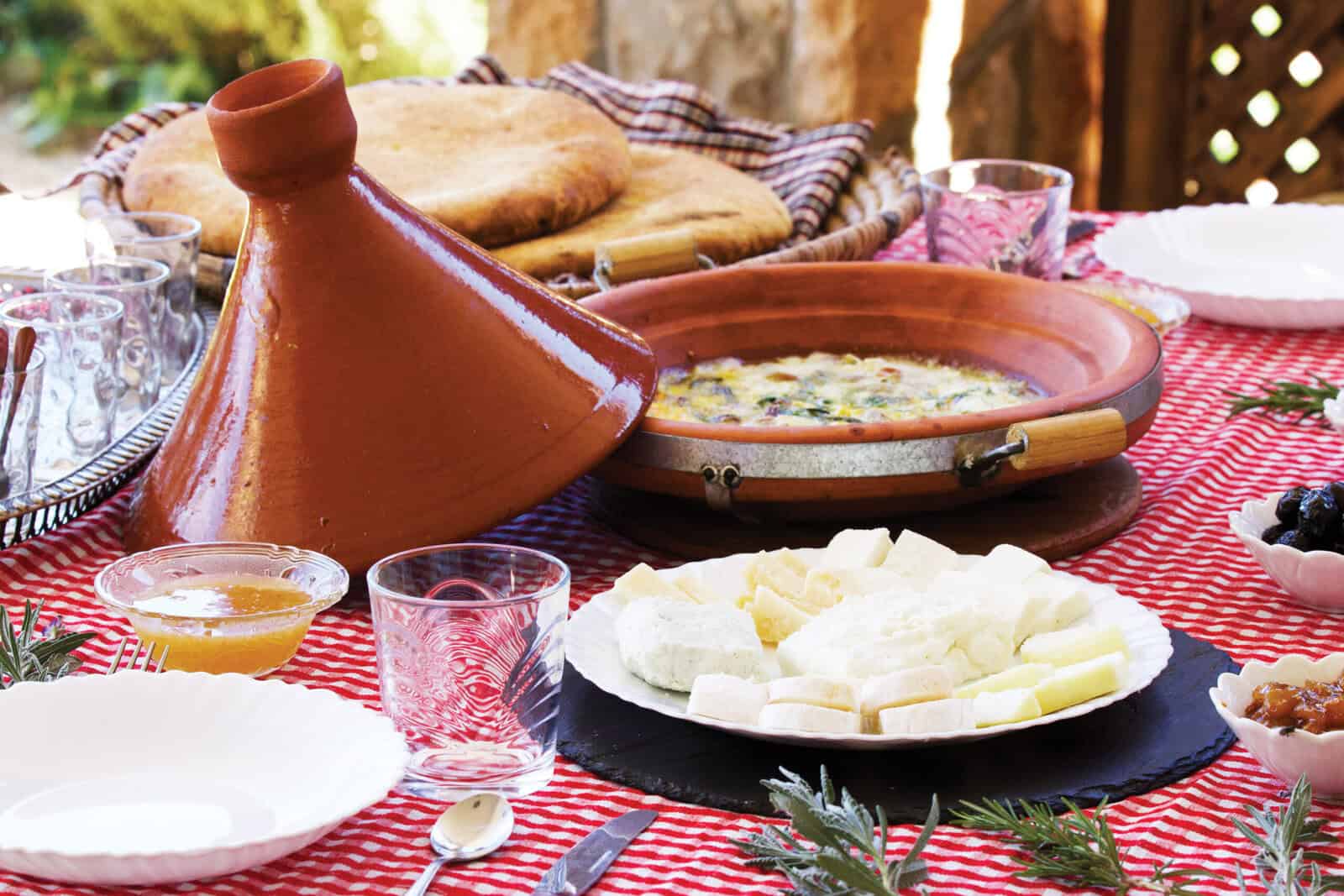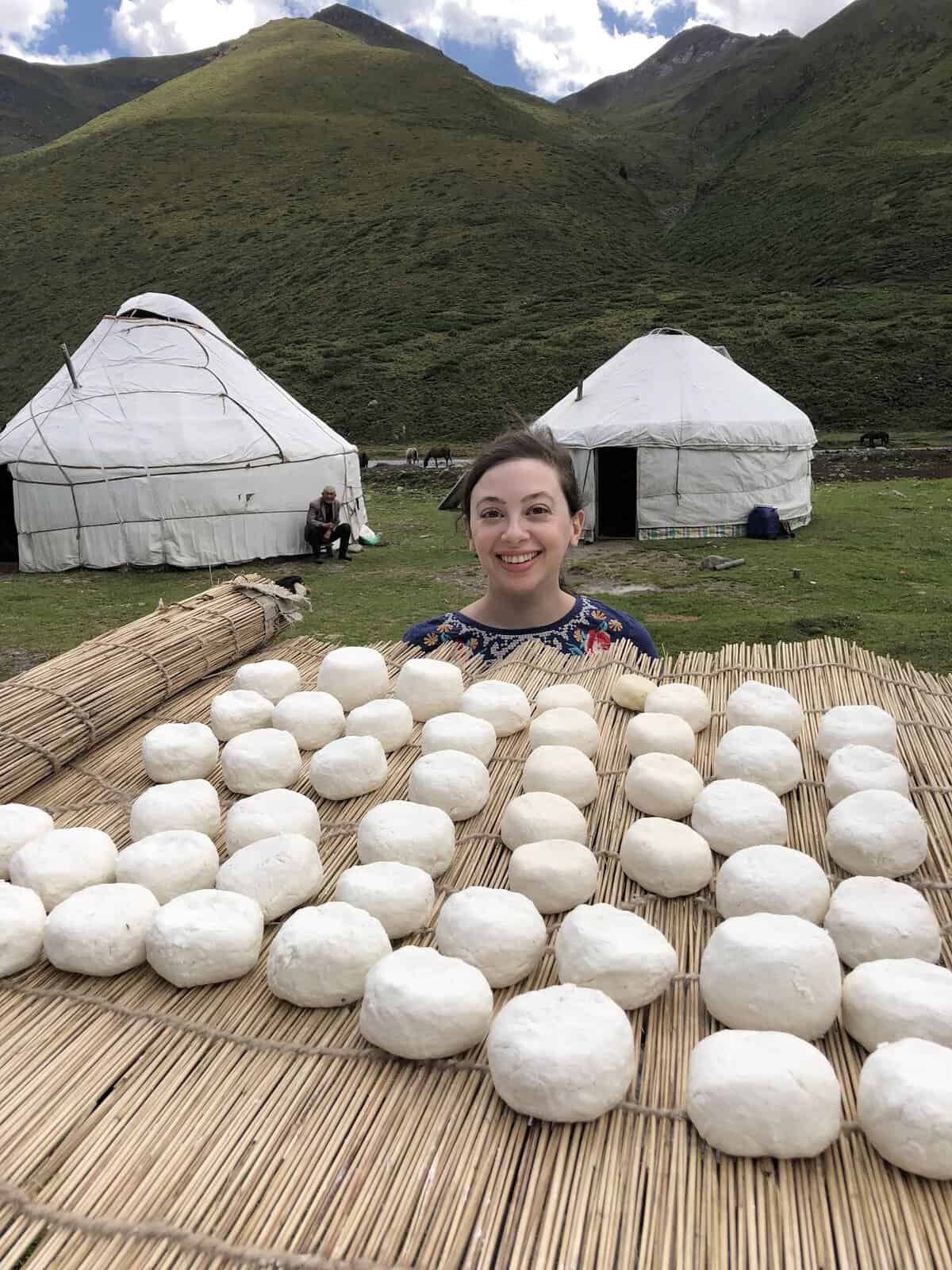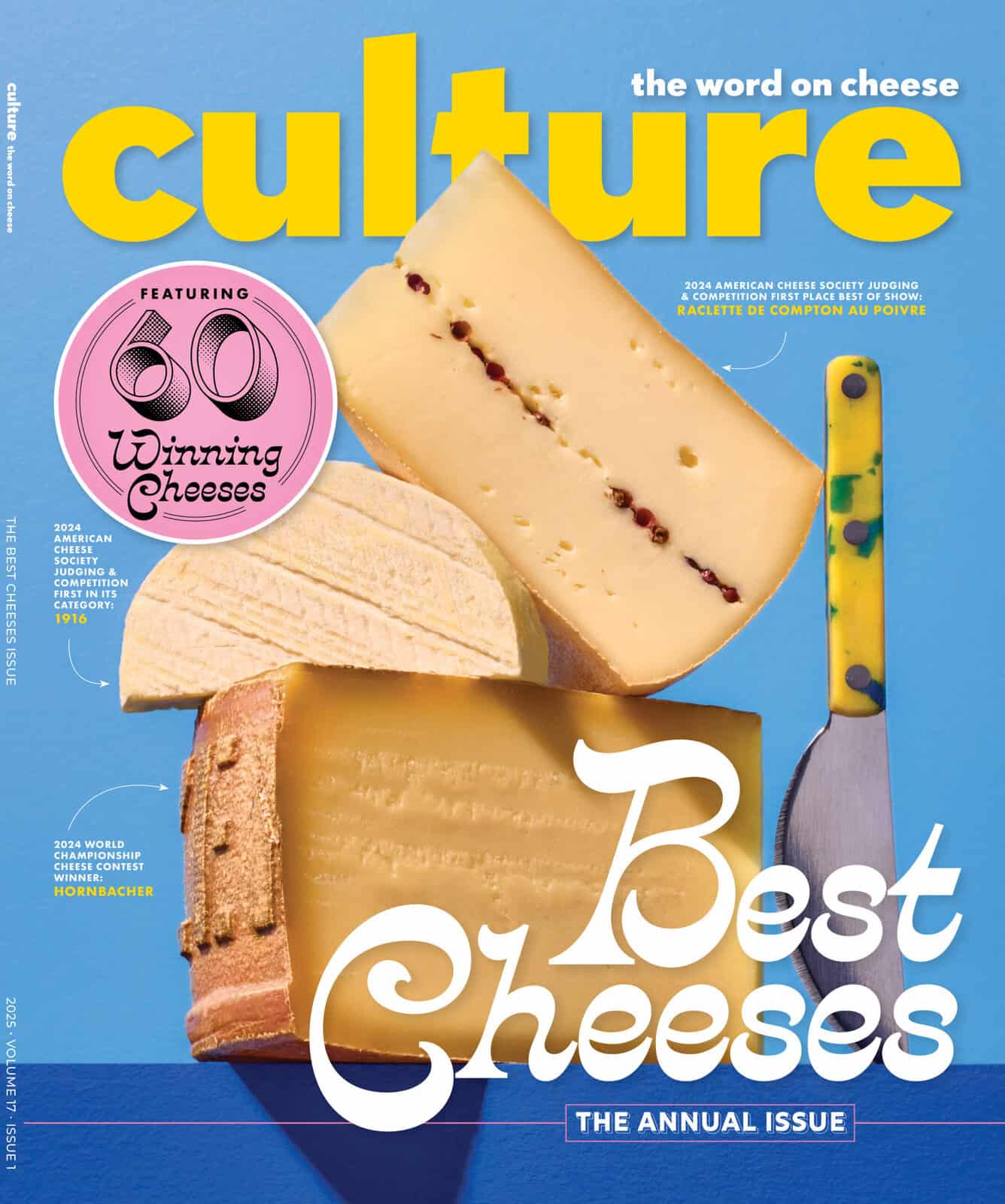
Photographed by Tyson Bateman
“Those are my Moroccan Ferraris,” says Tarik Lechkar, pointing to a pair of donkeys on his farm, Domaine de La Pommeraie. “And these are the goats.” As if on cue, the animals race out of their barn and down the hill toward the farmer.
We are in the Middle Atlas Mountains, 45 minutes from downtown Fez, in the town of Ait Sebaa. On his farm, lined with fruit trees and crocuses grown for saffron, Lechkar makes artisan goat cheese with milk from his herd of Alpine and Barcha goats.
In 1998, Lechkar began with 10 goats, but the operation ha grown to 50 goats today. When explaining why he chose to make cheese, Lechkar exclaims with his usual vivacity, “It’s genetic!” Lechkar’s great-grandfather emigrated from Spain to Tangier. “He was a supplier of goat’s milk for all of Tangier,” the farmer recounts. “He was selling directly. He was milking goats in front of you.” And Lechkar’s grandfather made jben, Morocco’s national cheese. Visitors to the North African country are likely to try this fresh cheese in one of Morocco’s ubiquitous big breakfasts. Usually mild, it’s ideal for spreading onto freshly baked bread—another offering to guests who tour Lechkar’s farm.
Visitors are also welcome to help make some of Lechkar’s signature dishes. “I invented this tagine,” he says, which is potentially the world’s first cheese tagine. (Tagine can refer to the clay conical vessel itself, known as the traditional Moroccan slow cooker, or anything prepared inside it.) The dish includes three of Domaine de La Pommeraie’s goat cheeses, slowly baked with coriander, saffron, and garlic cloves. In addition to the tagine, Lechkar makes cheese couscous with his Roquefort-style Vert de l’Atlas that’s served beneath a traditional chicken stew. Both are served with green tea flavored with mint grown on his farm.
On a large plate, he shares a sampling of the cheeses included in the tagine: buttery two-week-aged Berber Cedar; Mimouna, which is modeled after camembert; and firm and crumbly Kandri, with rich and tangy notes.
Lechkar revels in feeding guests at his farm, but his products are also available at upscale spots in the Fez area, including Palais Faraj Suites & Spa and Hotel Sahrai. For Lechkar, cheese isn’t a luxury item, it’s a calling. “It’s a question of creativity,” he says. “I think one of the best cheeses in the world is Moroccan cheese. I don’t say this just because I’m Moroccan. I know we do not do marketing. This is our lack, our problem.” But visitors to the Middle Atlas region will soon learn that Moroccan cheeses—and the dishes that use them— are worth the trip.




